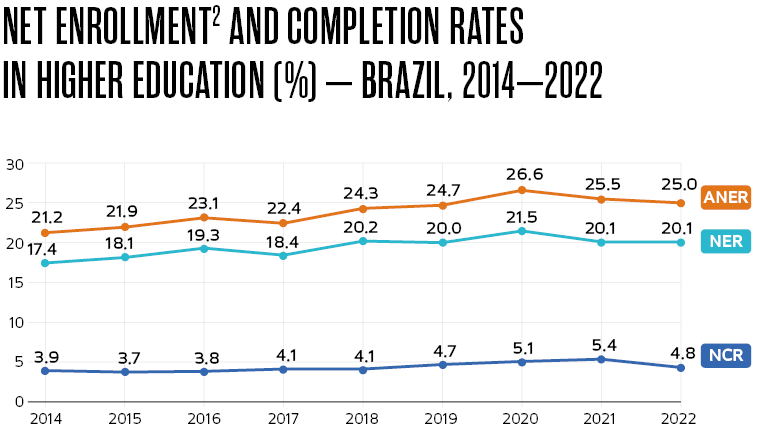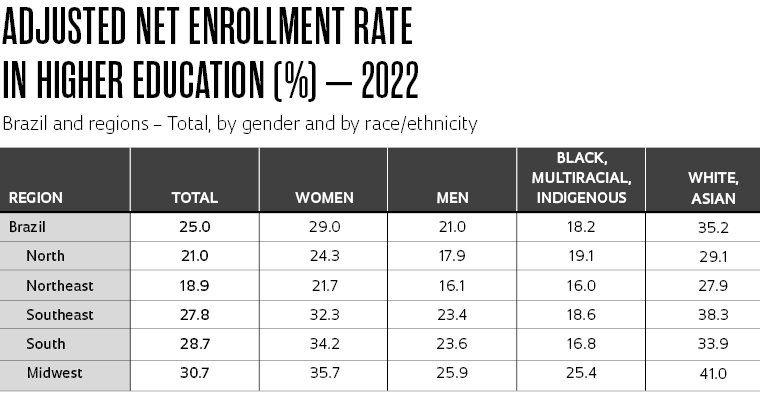- The Adjusted Net Enrollment Rate1 (ANER), which shows the percentage of people aged 18 to 24 who have completed or are currently enrolled in higher education, decreased from 26.6% in 2020 to 25% in 2022. The figure is calculated by summing the Net Enrollment Rate (NER) and the Net Completion Rate (NCR) for higher education. The NER (the percentage of 18 to 24 year olds enrolled in higher education) fell from 21.5% to 20.1% between 2020 and 2022. The NCR—the percentage of the same age group that have already completed an undergraduate course—fell from 5.1% to 4.8%, reversing an upward trend that began in 2015

- Brazil’s National Education Plan (NEP) for 2014–20243 established a target adjusted rate (ANER) of 33% by 2024. The recent drop reflects a decline in enrollments, possibly due to the COVID-19 pandemic, making it unlikely that the target will be met
- The Federal District, with an ANER of 44.3%, was the only state to hit the target in 2022. The three that follow—São Paulo (30.8%), Paraná (29.8%), and Santa Catarina (29.6%)—will have to make a significant effort to reach the target, and the rest of Brazil’s states even more so

- The table of major regions and population groups shows that the Northeast (18.9%) and North (21%) are still far below the target, while the others are close to 30%
- For women, the NEP’s goal was achieved in the South and Midwest. In addition to these two regions, the Southeast also reached the target among people that declared themselves as white or Asian
- In contrast, no region hit the target for the male population or people who declared themselves as black, multiracial, or indigenous. The Midwest had the smallest differences between the groups considered

Notes (1) Enrollment rates in Brazil are based on the 18–24 age group, which includes many people who have already completed a degree (5.4% in 2021) and therefore would not be considered in the NER, distorting the indicator. To eliminate this effect, the ANER is considered (2) The MEC designates all rates as “enrollment rates,” but this concept is used internationally for graduates by educational level, not for those enrolled at a certain level. We preferred to separate the two concepts (3) National Education Plan 2014–2024, Law No. 13.005 of 06/25/2014
Sources Report based on the NEP’s 4th Monitoring Cycle, INEP/MEC, 2022. Accessed on
08/05/2022 https://download.inep.gov.br/publicacoes/institucionais/plano_nacional_de_educacao/
relatorio_do_quarto_ciclo_de_monitoramento_das_metas_do_plano_nacional_de_educacao.
pdf and IBGE, Continuous National Household Sample Survey
Republish